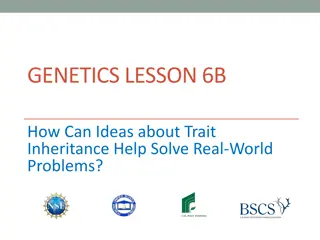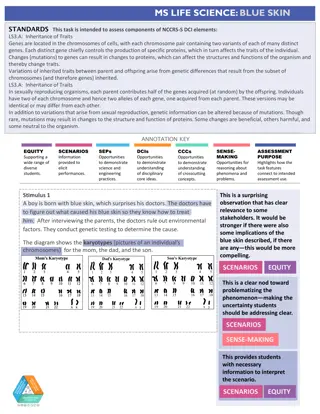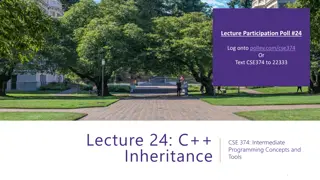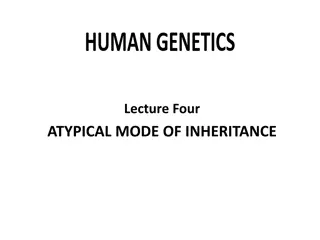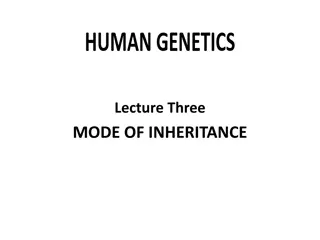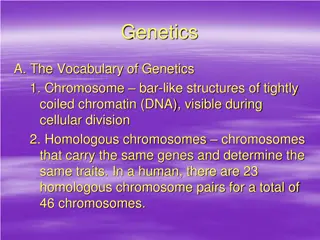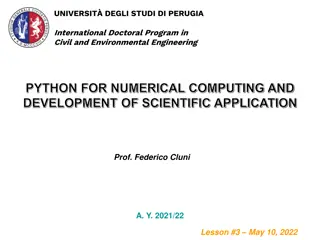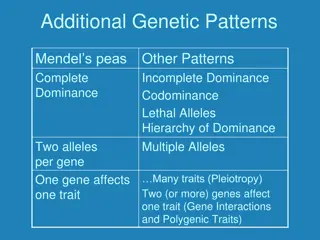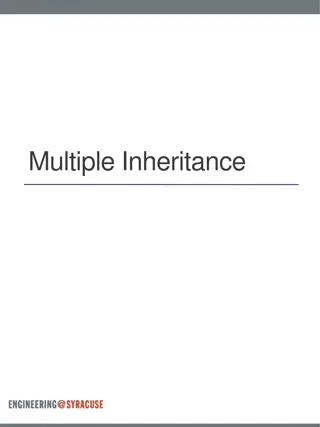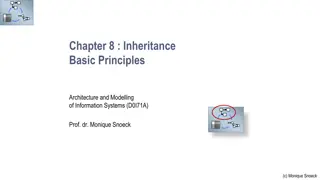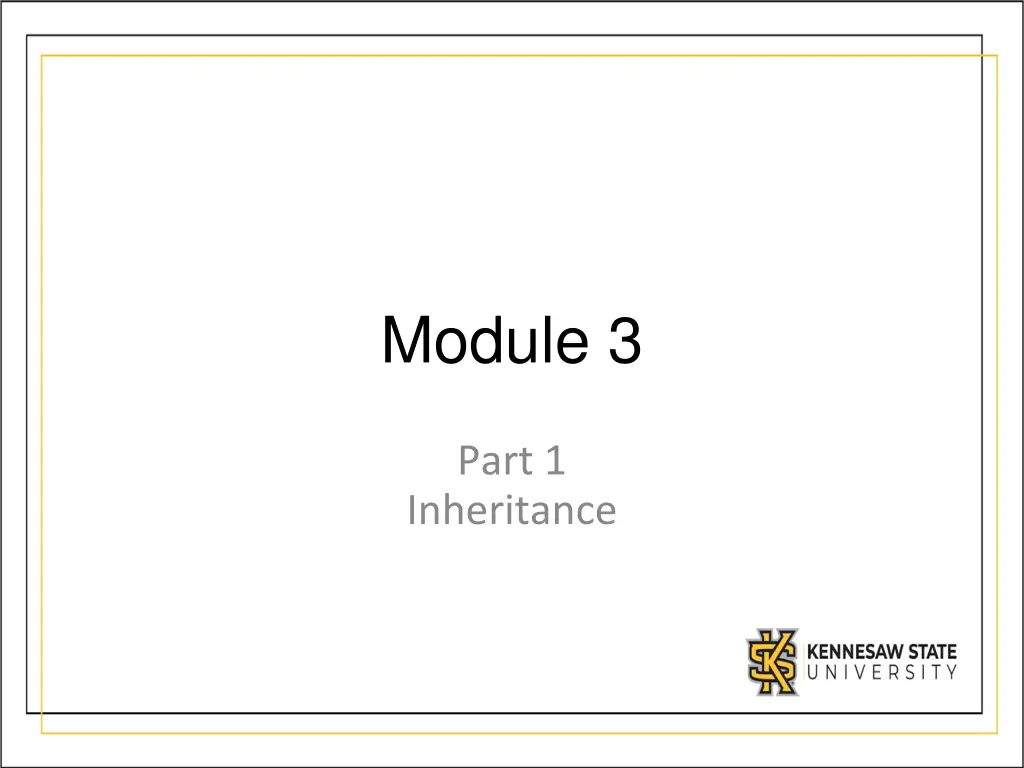
Understanding Inheritance in Object-Oriented Programming
Learn about the concept of inheritance in object-oriented programming through visual UML diagrams and examples. Discover how inheritance allows new classes to inherit attributes and methods from existing classes, saving time and promoting code reusability.
Download Presentation

Please find below an Image/Link to download the presentation.
The content on the website is provided AS IS for your information and personal use only. It may not be sold, licensed, or shared on other websites without obtaining consent from the author. If you encounter any issues during the download, it is possible that the publisher has removed the file from their server.
You are allowed to download the files provided on this website for personal or commercial use, subject to the condition that they are used lawfully. All files are the property of their respective owners.
The content on the website is provided AS IS for your information and personal use only. It may not be sold, licensed, or shared on other websites without obtaining consent from the author.
E N D
Presentation Transcript
Module 3 Part 1 Inheritance
UML - Unified Modeling Language Often you ll need to discuss design of classes with coworkers. Being able to visualize your classes in a consistent way is very helpful. UML allows you to draw the important details of a class for discussion. Most IDEs have built in way to draw a UML diagram from your code. Typically teams have an up to date UML on their wall near their work area, so they can quickly reference Methods/Attributes for classes. Each class is drawn as a rectangle, with the class name at the top, followed by all the attributes, then all the methods. Constructors are often not mentioned.
UML permissions Attributes and methods that are public will have a + on front of them. Attributes and methods that are private will have a - on front of them. Protected attributes we ll discuss later are represented by a #
An Example Mammal Class What do all mammals have? Temperature Weight Intelligence level Fur color What do all mammals do? Eat( ) Drink( ) Move( ) GiveBirth( ) So far, no inheritance Mammal + temp + weight + iQ + furColor + Eat( ) + Drink( ) + Move( ) + GiveBirth( ) This is called a UML Diagram
5 Inheritance Introduction Inheritance allows a new class to absorb an existing class s members. All non-private attributes and methods of the parent are now available to the child. Inheritance saves time by reusing proven and debugged high-quality software. Best shown through an example
The Dog Class What we could do is just copy/paste the code and rename to Dog Mammal Dog + temp + weight + iQ + furColor Do the same thing for: Cat Elephant Boar Cow + Eat( ) + Drink( ) + Move( ) + GiveBirth( ) No copy/pasting! BAD! USE INHERITANCE when classes are similar
Inheritance Mammal + temp + weight + iQ + furColor + Eat( ) + Drink( ) + Move( ) + GiveBirth( ) Cat Cow Dog Note: arrows point up to class they inherit from
Inheritance Trick questions: how many attributes does Dog have? how many methods does Dog have?
Inheritance Trick questions: how many attributes does Dog have? how many methods does Dog have? Dog, Cat, and Cow have 4 attributes and 4 methods, even though you can t see them No need to redeclare those attributes It s because of inheritance!
Customizing your Dog Your Dog is basically no different than a Mammal At this point, you can: Add additional attributes Add additional methods You can also override (redefine) inherited methods Don t confuse overriding with overloading (which is having two methods with the same name)
11 Terminology The is-a relationship represents inheritance. a Dog is a Mammal a Cow is a Mammal Mammal is called a super class, parent class, or a base class (all mean the same thing) Dog/Cow/Cat would be a derived class, a sub class, or child class
Inheritance example import java.util.*; class Mammal { public float weight; public int iQ; } class Dog extends Mammal { // There are 2 attributes here that you // can't see because of inheritance! } class Main { public static void main (String[] args) { Dog d = new Dog(); } }
Inheritance Fundamentals The hierarchy can be extended: Mammal Dog Labrador A Labrador is-a Dog A Labrador is-a Mammal A Mammal has-a string (furColor)
Example of overriding a method If you inherit a method from your parent, but you need to do things slightly differently, you ll override the method.
@Override keyword In java the @Override keyword is technically optional You should always include it when you are doing an override. If you put it in, Java can check that you are successfully overriding a method that you inherited. Without it, Java will let you silently fail to override a method. This is not a successful override
Object is the mother of all classes All classes inherit from Object If you don t specify, a class directly inherits from Object This will be invisible code Object defines basic things like toString( ) This is why you override toString( ) Redefine it to print something meaningful When overriding, method signature must match Default: print memory address of object
Example of Invisible Code // This class... class Mammal { public float weight; public int iQ; } // ...is exactly the same thing as this one class Mammal extends Object { public float weight; public int iQ; }
Example of Overriding ToString() class Mammal extends Object { public float weight; public int iQ; public Mammal () { weight = 7; iQ = 45; } } class Dog extends Mammal { @Override public String toString() { String s = "Weight is " + weight; s+= " and IQ is " + iQ + "\n"; return s; } } class Main { public static void main(String[] args) { Dog d = new Dog(); System.out.println(d); // Weight is 7 and IQ is 45 } } // @Override tells the compiler to check the override
Methods of Object Method clone() Description Creates and returns a copy of this object. equals (Object obj) Indicates whether some other object is "equal to" this one. getClass () Returns the runtime class of this Object. hashCode () Returns a hash code value for the object. notify () Wakes up a single thread that is waiting on this object's monitor. notifyAll () Wakes up all threads that are waiting on this object's monitor. toString () Returns a string representation of the object. wait () Causes the current thread to wait until another thread invokes the notify() method or the notifyAll() method for this object. wait (long timeout) Causes the current thread to wait until either another thread invokes the notify() method or the notifyAll() method for this object, or a specified amount of time has elapsed. wait (long timeout, int nanos) Causes the current thread to wait until another thread invokes the notify() method or the notifyAll() method for this object, or some other thread interrupts the current thread, or a certain amount of real time has elapsed.
Multiple Inheritance not allowed Man Wolf - weight - num puppies + run( ) + run( ) Werewolf - weight - num puppies + run( ) Werewolf w = new Werewolf( ); w.run(); // which run method is called?
Note about interfaces Man Wolf - weight - num puppies + run( ) + run( ) Werewolf - weight - num puppies + run( ) Keep this example in mind. We ll revisit it when talking about interfaces later.
super keywords super is how we reference things in the parent class In the child classes, you may see code like: super.myMethod( ) call the parent class s myMethod() Only needed if the child has overridden a method in the parent, and you want to call the original parents version. (Rare!) Best shown through examples
Example: Referencing Parent Classes class Mammal extends Object { public void makeNoise() { System.out.println ("AHOOWOOW"); } } class Dog extends Mammal { @Override public void makeNoise() { super.makeNoise(); System.out.println("Woof!"); } } class Main { public static void main(String[] args) { Dog d = new Dog(); d.makeNoise(); // Prints AHOOWOOW then Woof! } }
Calling a parents constructor All constructors in children classes automatically call their parents constructor. If you don t use the word super in a child s constructor, it ll automatically call the parents default (ie, no parameters) constructor. This happens whether you like it or not!!! This is more invisible code If you wish to call a different constructor, you simply add the word super() passing the appropriate parameters. Best shown through examples
Implicit code is highlighted in yellow class Mammal extends Object { public Mammal () { System.out.println ("Mammal constructor"); } } class Dog extends Mammal { public Dog() { super(); System.out.println("Dog constructor"); } } class Main { public static void main(String[] args) { // Wow! Output is: // Mammal constructor // Dog constructor Dog d = new Dog(); } }
This code calls the overloaded constructor in Student public class Student { String name; public Student() { name="unknown"; } public Student(String newName) { name=newName; } } public class KSUStudent extends Student{ public KSUStudent() { super("Unknown KSU Student"); } }
Access Modifiers There are four levels of visibility (for this course) Here are loose/sloppy definitions: public is visible everywhere in the code private is visible only within the class protected is visible only within the class or child classes default varies by language In general, visible to class in the same package/namespace Note: You do not specify default in your code when labeling attributes/methods in a class. Note: default is a keyword used in switch statements
Access Modifiers in Inheritance Access Modifiers Access Location public protected default private Same Class Yes Yes Yes Yes Sub-Class of the Same Package Yes Yes Yes NO Another Class of the Same Package Yes Yes Yes NO Sub-Class of Another Package Yes Yes NO NO Sub-Class/ Class of Another Package Yes No NO NO Figure: Base Class Member s Visibility Modes
29 Access Modifiers Most things are public by default in Java This is desirable for methods, but undesirable for attributes private members are not inherited and are not directly accessible by child-class methods and properties. Must access a parent s private variables by methods of that parent class
Example: private variables class Mammal { private int bodyTemp; public int getTemp() {return bodyTemp;} protected void changeTemp(int newTemp) { // Modifier bodyTemp = newTemp; } } class Dog extends Mammal { // Dog doesn't have access to bodyTemp, so use Mammal's accessor public void changeTemp(int newTemp) { super.changeTemp(newTemp); } } class Main { public static void main (String[] args) { Dog d = new Dog(); d.changeTemp(99); // Correct way System.out.println(d.getTemp()); // 99 d.bodyTemp = 95; // Doesn't compile } } // only Mammal can see this // Accessor
31 Odds and Ends Declaring instance variables as private and providing getters/setters helps enforce good design A change in a parent class propagates down to child classes good for maintenance/design Constructors are not inherited. Why not? Class Object s default (empty) constructor does nothing, but will always be called.
Summary Inheritance One class absorbs members from another class Doesn t absorb constructors or private members You can only inherit from one class You can access parent methods/variables using super Access modifiers change what s inherited and what is visible


